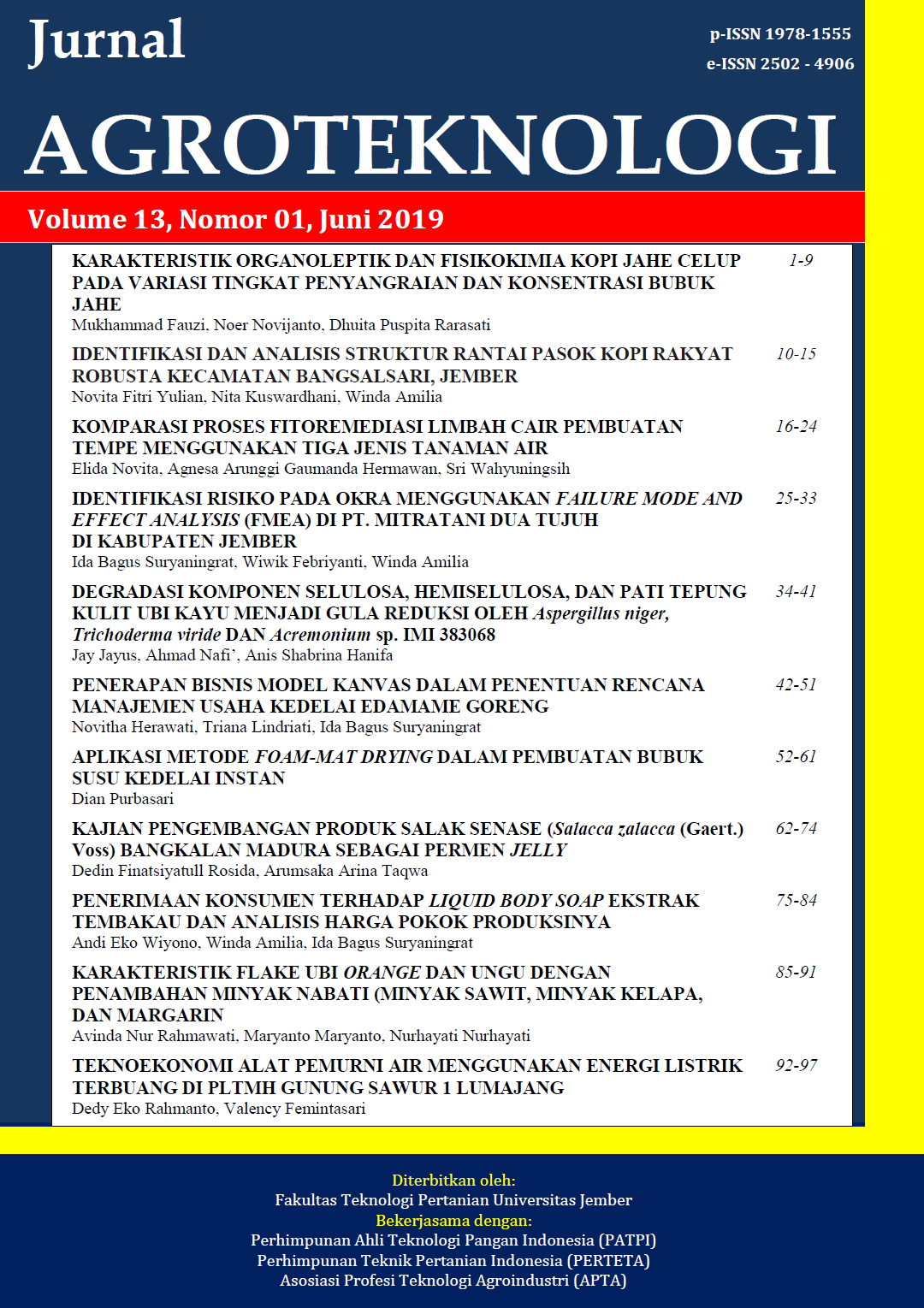DEGRADASI KOMPONEN SELULOSA, HEMISELULOSA, DAN PATI TEPUNG KULIT UBI KAYU MENJADI GULA REDUKSI OLEH Aspergillus niger, Trichoderma viride, DAN Acremonium sp. IMI 383068
Abstract
As the solid waste produced from cassava processing industry such as tapioca factory or its derivatives, the cassava peel is potential to be use as a source of reducing sugar through hydrolysis process, since the peels contains a high amount of starch and lignocellulose components. The more environmentally friendly enzymatic hydrolysis using several microorganisms will be introduced in this study as an alternative to avoid the unsafe acid hydrolysis. However, the hydrolysis process using a single microorganism is not efficient since the hydrolytic enzyme produced is limited to a single enzyme, while the component in the cassava peels to be hydrolyzed is diverse which include cellulose, lignin, hemicellulose and starch. Therefore, it is necessary to optimize the hydrolysis process by combining several microorganisms (A. niger, T. viride and Acremonium sp. IMI 383068) which produced different specificity of hydrolytic enzyme depending on the substrate available in the cassava peels. The aims of this research were to determine the effect of single and mixed culture on the amount of reducing sugar released during the simultaneous cultivation. The result showed that the use of simultaneous mixed cultures during hydrolysis process was able to produce higher reducing sugar compare to that of single culture. The hydrolysis of cassava flour using a single strain of A. niger, T. viride and Acremonium sp. IMI 383068 respectively produced 4.86 g/L, 4.02 g/L, and 1.68 g/L of reducing sugar, while the hydrolysis of it using simultaneous mixed cultures of A. niger, T. viride, and Acremonium sp. IMI 383068 produced 7.23 g/L of reducing sugar.
Keywords: cassava peels, hydrolysis, reducing sugar

This work is licensed under a Creative Commons Attribution-ShareAlike 4.0 International License.
Jurnal Agroteknologi has CC-BY-SA or an equivalent license as the optimal license for the publication, distribution, use, and reuse of scholarly work. Authors who publish with this journal retain copyright and grant the journal the right of first publication with the work simultaneously licensed under a Creative Commons Attribution-ShareAlike 4.0 International License that allows others to share the work with an acknowledgment of the work's authorship and initial publication in this journal.
 JURNAL AGROTEKNOLOGI
JURNAL AGROTEKNOLOGI 










.png)

